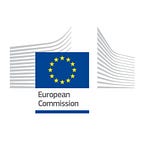Malnutrition in Sudan: The Other Crisis
On 23 October 2017, the European Commission announced a €106 million humanitarian and development support package to directly assist people in Sudan affected by forced displacement, disease outbreaks, and malnutrition. Emergency levels of malnutrition persist in Darfur, eastern Sudan, Kordofan and White Nile; however, providing adequate aid remains a challenge. The working environment for humanitarian organisations remains restrictive and access to those in need is only partially and temporarily granted.
Sudanese people are known for their hospitality. In the bustling town of Kassala, in eastern Sudan, this is no different. Our visit to monitor the effectiveness of EU humanitarian aid in helping refugees and crisis-affected communities ends with a get-together on the scenic banks of the river Gash. Having traded his day-time outfit for a turban and comfortable ‘jalabiya’, one of our hosts’ conclusions to the many impressions of the week is that we need to keep up the fight against malnutrition.
Acute malnutrition rates in Sudan are among the highest in Africa. One in six children suffers from acute malnutrition, and one in 20 from its most severe form which is likely to cause death unless treated. Although conflict-free, eastern Sudan is one of the country’s ‘malnutrition flash points’. Malnutrition permeates all but a few of Sudan’s communities, from Darfur and Blue Nile states to eastern Sudan and the camps which are home to hundreds of thousands of Eritrean and South Sudanese refugees.
In Kassala’s pediatric Kuwait hospital, most admitted children hail from the Rashaida, a nomadic tribe which migrated from Saudi Arabia more than a century and a half ago. Eleven-month-old Hamid has a naso-gastric tube taped to his emaciated head, a tell-tale sign of a child who has lost all appetite and is being fed therapeutic milk. His mother Salha doesn’t know her age. She bore 7 children, one of which died after exhibiting the same symptoms as Hamid: diarrhoea and vomiting. After three days in hospital, she feels her son is yet to get better.
An hour’s drive from Kassala, another nomadic community has been displaced by heavy floods which regularly affect the area. The Hadandwa live in modest dwellings made of branches and mats. Prolonged drought followed by torrential rains was the hallmark of last year’s El Niño. It left an additional 1.2 million people in Sudan short of food, on top of the 3.5 million previously affected by food insecurity.
This prompted EU Humanitarian Aid to step up its aid by releasing an additional €30 million for food assistance and nutrition. In the small village of Aumali, where 500 families found refuge from rising water levels and hunger, EU partners have organised the distribution of sorghum — a cereal grain — and the screening of children for malnutrition. They also ran mobile clinics and provided clean water.
In this country of contrasts, between urban and rural areas, peaceful and conflict-affected regions, the causes of malnutrition are pretty similar across the board: a high prevalence of killer diseases such as pneumonia, diarrhoea and malaria coupled with limited access to health care and safe water; but also inadequate nutrition as a result of traditions such as early marriage, limited family planning, and the premature ending of exclusive breastfeeding.
Half of all women are illiterate. In the past year, El Niño added food shortages, high prices and scarce water to the mix, resulting in an additional 60 000 severely malnourished children.
About 50 km south of Kassala lie the Shagarab camps, home to a third of the 100 000 Eritrean refugees who arrived here in the 1960s. These days, most refugees are young and intent on pushing onwards to other destinations. However, some end up staying, dissuaded by the risks of drowning in the Mediterranean Sea or torture and abuse at the hands of traffickers.
Even in the camps, which rely heavily on foreign aid, acute malnutrition rates are above emergency thresholds. World Food Programme and UN Refugee Agency, both EU partners, are respectively providing food vouchers and nutrition support, but malnutrition is still too high and food shortages loom.
Sudan joined the global Scaling Up Nutrition or SUN movement in 2015, a significant step in recognising — and thus signally a commitment to address — the malnutrition emergency. In 2015, just one third of the severely malnourished children were placed on treatment. In 2016, close to 225 000 children were admitted for treatment, a remarkable improvement but still representing less than half the number of children in need. The path to zero malnutrition in Sudan is yet to be completed. It will require dogged determination, impeccable coordination and adequate resources.
In December 2016, the European Commission increased its funding to UNICEF to €4.1 million so as to support nutrition activities in 12 states with emergency levels of malnutrition, including Darfur, eastern Sudan, Kordofan and White Nile. However, providing adequate aid remains a challenge. The working environment for humanitarian organisations remains restrictive and access to those in need is only partially and temporarily granted.
In Darfur, where one-third of all severely malnourished children live, there has been a 75% drop in the number of aid workers in international organisations in the last five years. In a country where fighting has resulted in over 3 million displaced, where hundreds of thousands of refugees from Eritrea and South Sudan are seeking refuge, and an ongoing malnutrition emergency is claiming many innocent lives, sustained and timely access to work alongside these vulnerable communities has to be at top priority for all.
By Anouk Delafortrie, Regional Information Officer for the Great Lakes, East & Southern Africa, EU Humanitarian Aid
Learn more about EU Humanitarian Aid.
